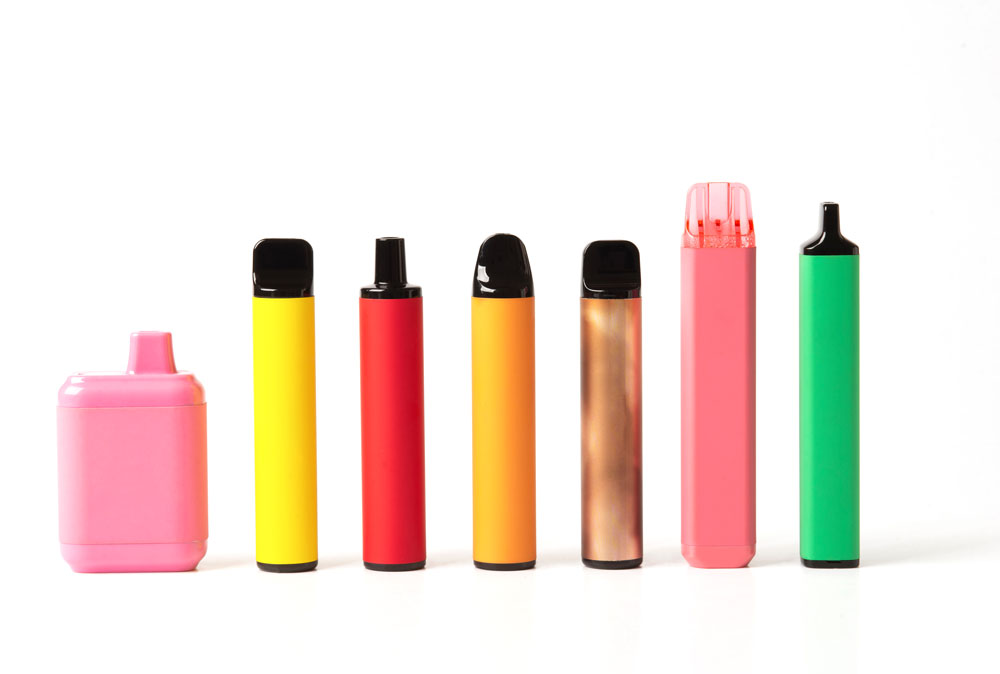
Vapes have been a hot topic of conversation for a good few years now, but a new risk is emerging that many didn’t foresee: vape battery fires.
Most people will now be well-versed in the discussion of vapes effect on our health, and the risk of links to cancer and other concerning illnesses.
There is, however, increasing evidence that among the discussion about the health risks is another important issue. While doing research for this piece, Firechief discovered a worrying trend of users searching ‘can vape pens start a fire’, ‘are vapes a fire hazard’, and ‘are vape batteries lithium’.
The Risk of Vape Pen Fires
As the Guardian points out, every year around 138m single-use vapes are sold in the UK; they are instantly recognisable and are sold in bulk on our high streets.
The bright colours and eye-catching packaging distract from the risks that these small instruments can contain.
While many can be bought, used, and disposed of with no fire issue, they can be volatile, reacting badly to crushing, puncturing or immersion in water.
The risk with vape pens is linked to the battery inside of it which is a lithium-ion battery.
Many will have heard of the risk of fire with e-cars, bikes and scooters (even phones when they overheat!) however are unaware of the link to vape pens. The 138m single use vapes mentioned earlier contain enough lithium for around 1,200 electric vehicle batteries!
Lithium Battery Fires
In 2021, the London Fire Brigade attended 104 fires involving Lithium-ion batteries however this year they’ve attended an e-bike or e-scooter fire once every two days on average!
Lithium battery fires are becoming well-known for their ferociousness and the difficulty they can pose to those trying to put them out.
When thinking of these fires, we often see images of burnt-out cars and homes, forgetting that laptop, phones, and vapes can also cause these devastating blazes which also emit toxic gases.
There is hope, however, as lithium-ion battery fires are fairly rare as long as the item is looked after, and preventative steps are taken.
Vape Detectors
To try and combat fears of, and incidents involving, lithium battery products, multiple industries are using innovative detection systems.
IFSEC Insider reports that an increasing number of schools are installing vape detection systems as incidences involving vapes are on the rise.
These systems, which have been installed in public housing, hotels, public libraries and shops before, can alert school management to the presence of vape smoke and vapour in the air so that staff can take appropriate action to combat the rise of students using vapes in enclosed areas such as toilet cubicles.
One Principal told the House of Commons Health and Social Care Committee in June that she estimates that around 25% of students at the school were vaping which poses a serious disruption, health and fire risk to the school.
The rise in detection technology is not only helping to detect the use of vapes to mitigate risk in schools, but also in waste centres up and down the country.
The Guardian produced an article highlighting the risk of vape fires in waste centres when they are disposed of incorrectly and damaged in the process.
The article highlights that the hazardous materials in lithium batteries and at waste centres means that fires, such as the Bradford tyre fire in 2020, can burn for days or weeks and use a massive amount of resources.
Consequently, there has been a rise in innovative thermal imaging cameras, automatic foam jets, and artificial intelligence-controlled systems.
These systems in high-risk spaces and public places can provide an added layer of protection in the battle against lithium-ion battery fires however it is a risk that becomes more prevalent with the rise in vapes and lithium-ion battery products.
How to Reduce the Vape Fire Risk
On a more individual level, though, there are steps that everyone can take to reduce the risk of fire in their personal items that contain lithium-ion batteries.
These are split into two categories - preventative and containment measures – and should be at the forefront of our minds when using lithium-ion battery products.
Preventative measures:
- Protect the batteries from being crushed, punctured or immersed in water
- Always use the charger that came with your device
- Avoid storing or charging them at very high or very low temperatures
- Don’t leave them continuously charging, for instance overnight
- Don’t let your device get too high or too low, charge your devices between 20-80%
- Keep an exit route clear while a device is charging
- Never charge your device on a soft surface, such as pillows
- When you travel, avoid keeping lithium-ion battery devices together
Containment measures:
- Stop using your device or charger your if the temperature of either rises more than 10 degrees on a regular charge
- If a lithium-ion battery device overheats, hisses, or bulges, immediately move it away from flammable materials, if possible, put it safely outdoors to burn out
- Moving a battery after a fire can cause re-ignition for up to 10 hours after it started
There are also specialist products that can contain lithium-ion battery fires such as the Firechief Premium Battery Fire Blanket and Lith-Ex extinguishers.
To find out more or discuss the subject matter of this piece, head to our website or get in contact with us today!

